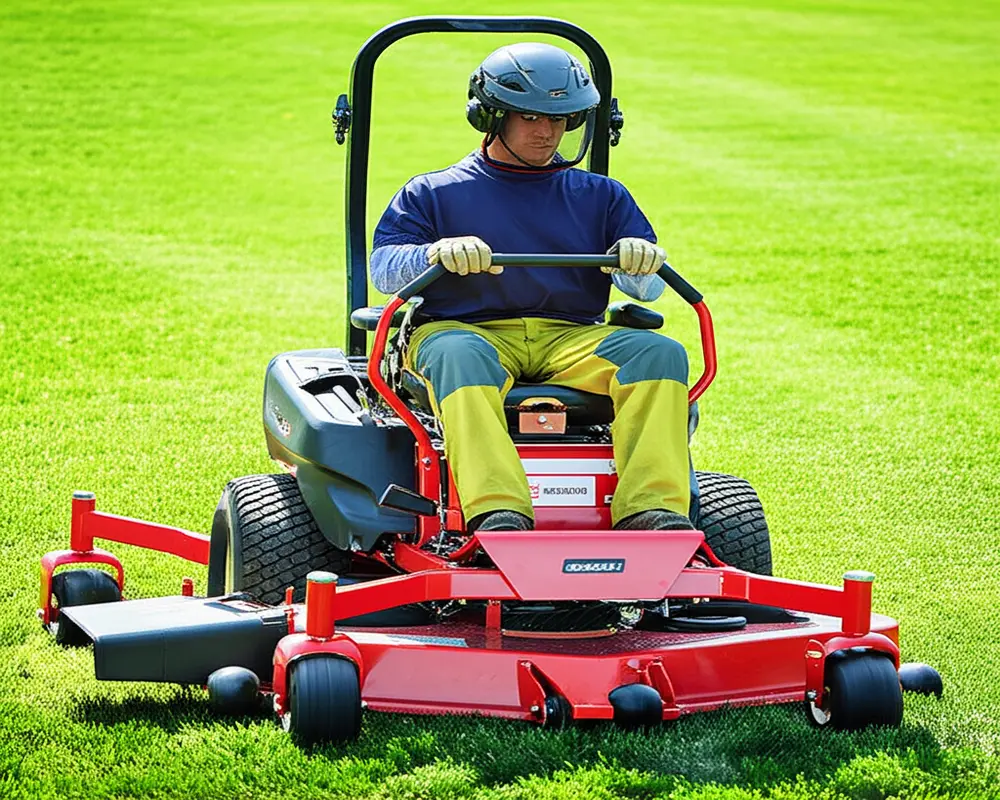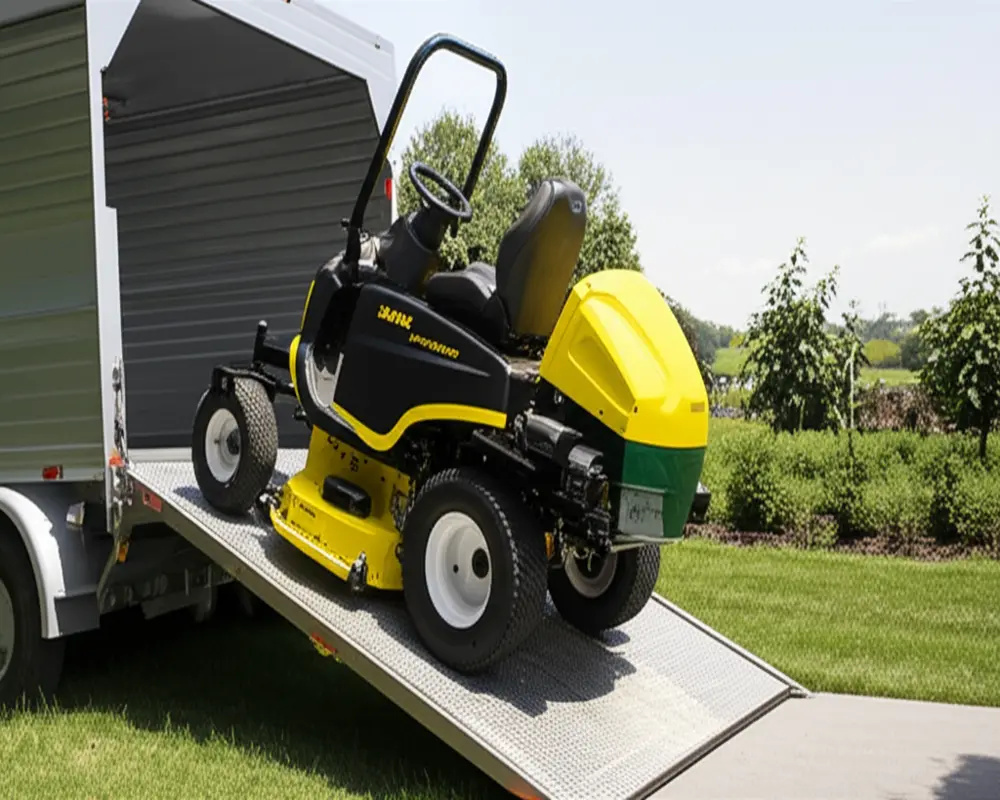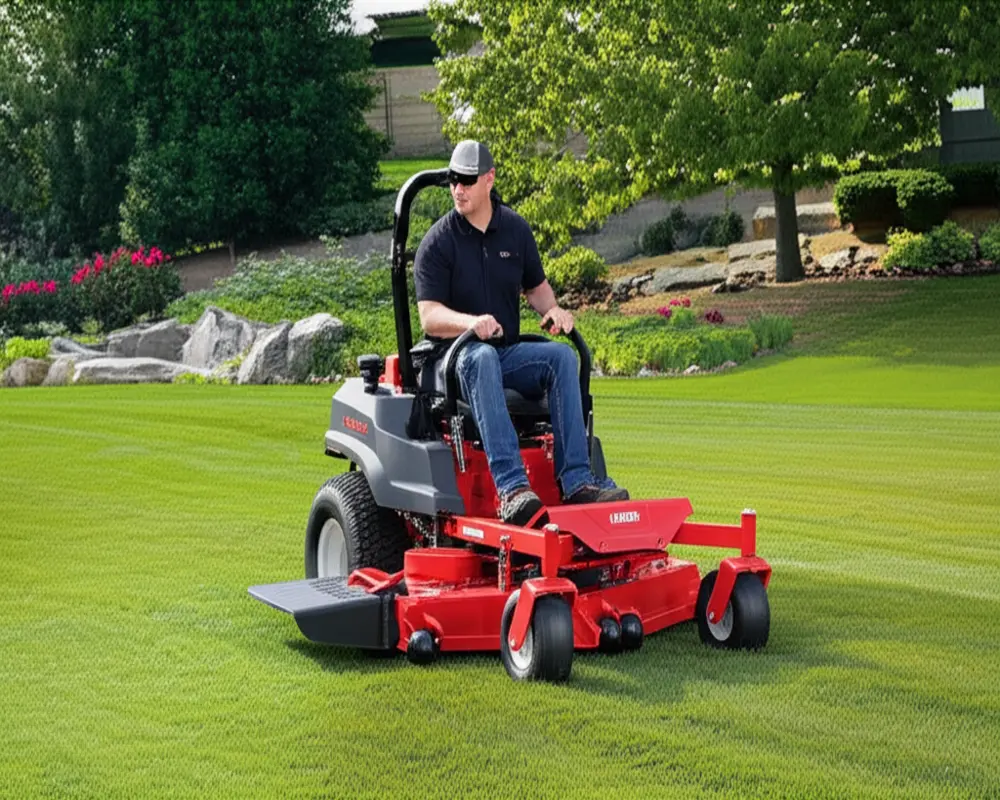Stand-On Mower Advantages: Unlock Efficiency & Precision in 2025
Mowing technology continues to evolve, reshaping how landscapers and property owners maintain their grounds. Among the latest innovations, stand-on mowers have gained significant traction, thanks to their blend of agility, precision, and operator comfort. This guide delves into the key stand-on mower advantages, exploring how these machines are revolutionizing mowing efficiency and business outcomes for 2025 and beyond.
Thank you for reading this post, don't forget to subscribe!I. Introduction: Redefining Mowing – Why Stand-On Mowers Are Gaining Ground
A stand-on mower is a type of zero-turn mower designed for the operator to stand rather than sit during operation. This design innovation enhances maneuverability and visibility, providing a distinct edge over traditional seated or walk-behind mowers. The operator stands on a platform at the rear, controlling the mower with precision steering levers, which allows for more intuitive handling.
The popularity of stand-on mowers is rising steadily among landscapers, commercial lawn care businesses, and owners of large, complex properties. Their ability to combine speed with agility makes them ideal for navigating intricate landscapes with numerous obstacles and varying terrain. Moreover, professional operators report reduced fatigue and improved productivity, making this mower type a smart choice for demanding mowing schedules.
This guide aims to explore the unique stand-on mower advantages, highlighting their key benefits and ideal use cases. Whether you are a commercial landscaping business or a homeowner with a large property, understanding these benefits can help you decide if a stand-on mower fits your needs.
II. Core Advantage 1: Unparalleled Maneuverability & Agility in Tight Spaces
One of the most notable stand-on mower advantages is their exceptional maneuverability, especially in tight or complex layouts. Thanks to their zero-turn capability combined with the operator’s standing position, these mowers offer quicker, more intuitive steering responses. The elevated stance improves the operator’s ability to assess and react to the surroundings rapidly.
Whether maneuvering around trees, flower beds, or fences, stand-on mowers glide with precision, significantly reducing the need for secondary trimming. Their agility allows operators to maintain closer cuts to obstacles without compromising safety or speed, outperforming both seat-down zero-turn mowers and traditional walk-behind models in complex yard designs.

III. Core Advantage 2: Superior Operator Visibility for Precision & Safety
Visibility plays a critical role in mowing precision and safety, and stand-on mowers provide a distinct advantage in this area. The operator’s elevated vantage point offers an improved view of the cutting deck, the mowing path, and the immediate environment. This enhanced sightline minimizes missed spots and ensures a consistent, professional-quality cut.
From a safety perspective, the standing position allows for faster detection of obstacles, children, or pets that may unexpectedly enter the mowing area. This real-time awareness can prevent accidents and damage, especially in residential or commercial settings with high foot traffic.

IV. Core Advantage 3: Enhanced Productivity & Operational Efficiency
Stand-on mowers combine speed and agility to deliver faster job completion times. Their design allows operators to dismount quickly for debris removal or obstacle management without shutting down the mower, maintaining workflow continuity. This easy on-and-off access reduces downtime significantly.
Precision cutting reduces backtracking and the need for re-mowing, which further boosts operational efficiency. For commercial landscapers, this means the ability to handle more jobs per day or week, directly impacting profitability.
V. Core Advantage 4: Ergonomic Benefits & Reduced Operator Fatigue
The standing posture of operators on these mowers is ergonomically beneficial. Weight shifting while standing reduces strain on the back, hips, and legs compared to sitting for long periods. This can alleviate common aches and stiffness associated with mowing, leading to improved blood flow and sustained alertness.
These ergonomic advantages are vital for professional crews working extended hours, as they contribute to long-term operator health and reduce fatigue-related errors or injuries.
VI. Core Advantage 5: Excellent Traction & Stability on Varied Terrain
Stand-on mowers often feature a lower center of gravity, which improves balance and traction over uneven surfaces. The operator’s ability to shift weight dynamically enhances grip, especially on slopes, hills, and ditches. This makes stand-on mowers more capable than many seated zero-turn models on challenging terrains.
VII. Core Advantage 6: Compact Footprint & Improved Transportability
The compact design of stand-on mowers is another significant benefit. Their smaller footprint allows for easier storage in tight garage spaces or trailers. They are often lighter and less bulky than sit-down zero-turn mowers, simplifying loading and unloading.
This compactness also means landscapers can maximize trailer space, fitting more equipment per trip, which reduces transportation costs and time.

VIII. Who Benefits Most from a Stand-On Mower? Specific Use Cases
Commercial landscaping businesses appreciate the speed, efficiency, and versatility stand-on mowers offer, allowing crews to complete more properties with fewer resources. Large residential property owners with complex, obstacle-rich yards find these mowers ideal for navigating intricate gardens and varied terrain.
Property management companies benefit from the mower’s ability to maintain diverse properties efficiently. Stand-on mowers also handle challenging landscapes featuring numerous trees, detailed gardens, and moderate slopes better than many alternatives.
IX. The Business Case: Maximizing ROI with a Stand-On Mower
Investing in a stand-on mower can yield substantial returns. Faster job completion translates into labor cost savings, as crews can complete more work within the same timeframe. Reduced operator fatigue and improved ergonomics mean healthier workers and less downtime, enhancing staff retention.
The precision and professionalism enabled by these mowers build client satisfaction, fostering repeat business and referrals. Additionally, fleet optimization becomes feasible by complementing or replacing other mower types to improve overall efficiency.
X. Considerations: Is a Stand-On Mower Right for Everyone?
While stand-on mowers offer many advantages, they come with considerations. The initial investment is often comparable to high-end zero-turn seated models. Operators may face a brief learning curve to adapt to the standing control setup. Comfort and safety on extreme terrain require attention; these mowers perform best on moderate slopes, with specialized equipment needed for steeper hills.
Despite these factors, the advantages typically outweigh the cons for suitable applications, especially where maneuverability and productivity are priorities.
XI. Conclusion: The Future of Efficient Mowing
In summary, stand-on mowers offer compelling benefits in maneuverability, operator visibility, ergonomic advantages, and operational efficiency. These features collectively empower landscapers and property owners to achieve superior mowing results with improved comfort and safety.
As mowing technology advances, stand-on mowers stand out as a practical investment for those seeking to boost productivity and quality. Considering your property type and mowing needs, incorporating a stand-on mower into your equipment arsenal can be a transformative step toward optimized landscape maintenance.
Frequently Asked Questions (FAQs)
- What makes stand-on mowers different from zero-turn sit-down mowers?
- Stand-on mowers position the operator standing on a rear platform, providing enhanced visibility and maneuverability, whereas sit-down zero-turn mowers have the operator seated, which can limit sightlines and agility in tight spaces.
- Are stand-on mowers suitable for hilly terrain?
- They perform well on moderate slopes due to their low center of gravity and weight-shifting capability but may require additional precautions or equipment on steep hills.
- Do stand-on mowers reduce operator fatigue?
- Yes, the standing posture allows for dynamic weight shifting, reducing strain on the back and legs compared to prolonged sitting, thereby lessening fatigue.
- Can stand-on mowers improve business profitability?
- By enabling faster job completion, reducing operator downtime, and improving cut quality, stand-on mowers can significantly enhance profitability for commercial landscaping businesses.
- What maintenance is required for stand-on mowers?
- Maintenance is similar to other zero-turn mowers, including regular blade sharpening, engine checks, and cleaning, with attention to standing platform components for safety.
For more insights on maintaining your garden tools effectively, consider our guide on garden spade rust prevention.
Explore trusted manufacturer details and product options on the Toro official website.
Industry perspectives on stand-on mower benefits and considerations can be found in Lawn & Landscape Magazine and Professional Landscape Network.
For commercial insights, visit Commercial Lawn Business.

